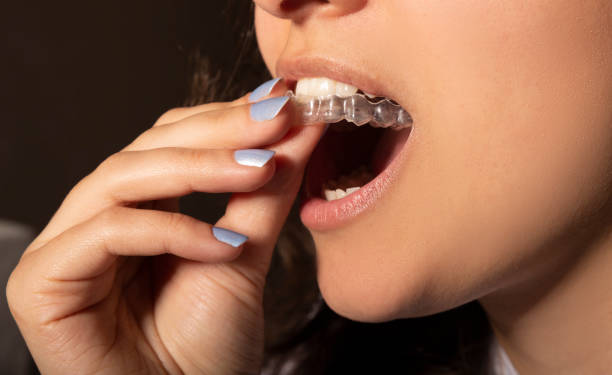In recent years, Invisalign has emerged as a revolutionary alternative to traditional metal braces, offering a discreet and efficient way to straighten teeth. This innovative treatment has gained significant popularity among adults and teenagers due to its aesthetic appeal and convenience. In this comprehensive guide, we will explore the intricacies of Invisalign treatment, from how it works to the benefits it provides and what to expect throughout the process.
Understanding Invisalign: The Basics
Invisalign is a modern orthodontic treatment that uses a series of clear, removable aligners to shift teeth into their desired positions gradually. These aligners are custom-made using advanced 3D imaging technology, allowing for a precise fit and tailored treatment plan. Unlike traditional braces, which consist of brackets and wires, Invisalign aligners are virtually invisible, making them an attractive option for those who wish to maintain a natural appearance while undergoing orthodontic treatment.
The journey begins with a consultation with an orthodontist or dentist trained in Invisalign procedures. During this initial visit, the practitioner will evaluate the patient’s oral health, discuss their goals, and take digital scans or impressions of their teeth. These images are then used to create a personalised treatment plan, mapping out the series of aligners needed to achieve the desired results. Typically, patients will receive a new set of aligners every one to two weeks, each designed to make slight adjustments to tooth positioning.
The Benefits of Choosing Invisalign
One of Invisalign's most significant advantages is its aesthetic appeal. The clear aligners are virtually undetectable, allowing individuals to straighten their teeth without the self-consciousness often associated with traditional braces. This feature makes Invisalign particularly popular among adults in professional settings who may be concerned about their appearance during treatment.
In addition to being discreet, Invisalign aligners are also removable. This allows patients to enjoy their favourite foods without restrictions, as there are no brackets or wires to worry about. Patients can remove the aligners while eating and drinking, making oral hygiene easier. Brushing and flossing become less cumbersome, as there are no braces to navigate around, promoting overall dental health throughout the treatment process.
Moreover, the comfort level of Invisalign is another appealing factor. Traditional braces can cause discomfort due to the pressure exerted by the wires and brackets, often leading to mouth sores. In contrast, Invisalign aligners are made from smooth plastic, significantly reducing the likelihood of irritation. Patients may experience discomfort when switching to a new set of aligners, but this is typically manageable and short-lived.
The Treatment Process: What to Expect
The Invisalign treatment process is designed to be straightforward and efficient. Patients will receive their first set of aligners after the initial consultation and creation of the treatment plan. To ensure optimal results, it is essential to wear the aligners for at least 20 to 22 hours each day. The aligners can be removed for eating, drinking, brushing, and flossing, but the longer they are worn, the more effective they will be.
Regular check-ins with the orthodontist or dentist are essential to the process. These appointments typically occur every six to eight weeks, allowing the practitioner to monitor progress and make any necessary adjustments to the treatment plan. Patients may also receive additional aligners during these visits, ensuring the treatment stays on track.
The duration of Invisalign treatment varies based on individual needs and the case's complexity. On average, treatment can last anywhere from 6 to 18 months, but some patients may achieve their desired results in a shorter timeframe. It is essential to have realistic expectations and understand that each case is unique and influenced by factors such as age, dental health, and misalignment.
Addressing Common Concerns and Misconceptions
While Invisalign offers numerous benefits, it has its concerns and misconceptions. One common worry is whether Invisalign is effective compared to traditional braces. It is essential to note that Invisalign is suitable for various orthodontic issues, including mild to moderate cases of crowding, spacing, and bite problems. However, more complex cases may still require traditional braces. A thorough evaluation by a qualified orthodontist will help determine the most appropriate treatment option for each individual.
Another misconception is that Invisalign is only for adults. InTeenagersan can also benefit from this treatment, with specific aligners to accommodate their dental growth. Invisalign Teen includes features such as compliance indicators, which help track wear time, ensuring that young patients are following their treatment plan.
Cost is another factor that often comes into play when considering Invisalign. While the treatment price may be comparable to that of traditional braces, it can vary based on factors such as the case's complexity and the treatment duration. Many dental insurance plans now offer coverage for Invisalign, and flexible payment options are often available to help make the treatment more accessible.
Maintaining Results After Treatment
Once the Invisalign treatment is complete and patients have achieved their desired smile, it is crucial to maintain the results. This often involves using a retainer, which helps prevent teeth from shifting back to their original positions. Retainers can be fixed or removable, and your orthodontist will provide guidance on the best option based on your specific needs.
Additionally, maintaining good oral hygiene practices remains essential post-treatment. Regular dental check-ups, brushing, and flossing are vital to ensuring long-lasting results and overall dental health. Adopting a proactive approach to oral care will help preserve the beautiful smile achieved through Invisalign treatment.
Invisalign treatment represents a significant advancement in orthodontics, offering a comfortable, practical, and aesthetically pleasing solution for those seeking to straighten their teeth. Individuals can make informed decisions about their orthodontic journey by understanding the process, benefits, and considerations involved. With proper care and commitment, achieving a confident smile is not just a possibility but a reality.





Comments